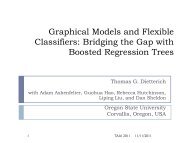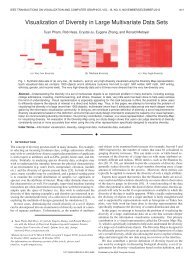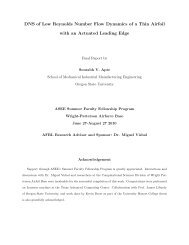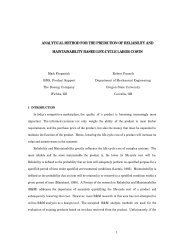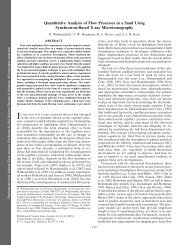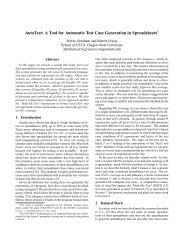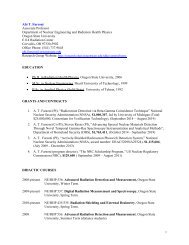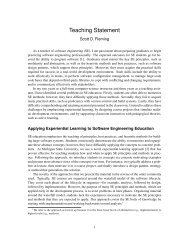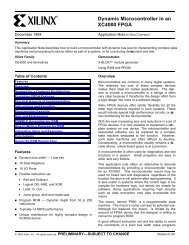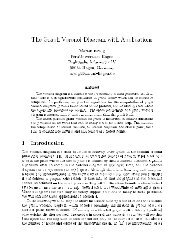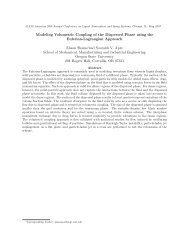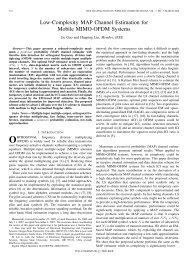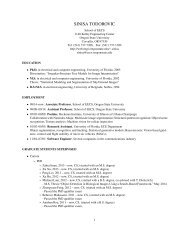Large-eddy Simulation of Realistic Gas Turbine Combustors
Large-eddy Simulation of Realistic Gas Turbine Combustors
Large-eddy Simulation of Realistic Gas Turbine Combustors
Create successful ePaper yourself
Turn your PDF publications into a flip-book with our unique Google optimized e-Paper software.
and several different models have been calibrated against this experiment. In addition, the gasphase<br />
is initially at rest, and any flow generated is through the momentum transfer from the<br />
liquid to the gas-phase allowing us to investigate the two-way coupling effects. The gas-phase<br />
flow generated alters the relative velocity between the droplets and the flow, changes the breakup<br />
time-scale and plays an important role in capturing the spray penetration depth accurately.<br />
The simulation was carried out at three different chamber pressures using the hybrid approach<br />
outlined in section 2.4.4. Figure (5) shows the time evolution <strong>of</strong> liquid spray at 1.1MPa.<br />
The region close to the injector mostly consists <strong>of</strong> large unbroken drops along with small, stripped<br />
droplets. The ligament-like liquid structures deflected outward are clearly visible. Comparison<br />
<strong>of</strong> penetration depth to experimental data at different chamber pressures obtained from the hybrid<br />
approach is shown in Fig. (6). Other spray characteristics such as liquid core length, spray<br />
angle, and the Sauter mean diameter (SMD) are also in good agreement with the experimental<br />
data [10].<br />
4.4 Validation <strong>of</strong> spray patternation study for realistic PW injector<br />
The stochastic model along with the hybrid particle-parcel approach are used to compare the<br />
prediction <strong>of</strong> spray patternation characteristics for a realistic PW injector with the experimental<br />
data. The experimental data set [25] was obtained by mounting the actual injector in a cylindrical<br />
plenum through which gas with prescribed mass-flow rate was injected. Figure (7a) shows a<br />
cut through the symmetry plane (z = 0) <strong>of</strong> the computational domain along with the mesh and<br />
boundary conditions used. For this case, 3.2M grid points are used with high resolution near<br />
the injector. The domain decomposition is based on the optimal performance <strong>of</strong> the Eulerian<br />
gas-phase solver on 96 processors. Air from the inlet plenum goes through the central core,<br />
guide, and outer swirlers to create multiple swirling jets. All the passages through the swirler<br />
are computed. Also shown are the instantaneous axial velocity contours superimposed by the<br />
droplet locations (Fig. 7b). The swirling air jet from the core swirler enters the dump region<br />
and forms a recirculation zone. Jets from guide and outer swirlers interact with the core flow. A<br />
complex vortex break down phenomenon is observed and its accurate prediction is necessary to<br />
18



